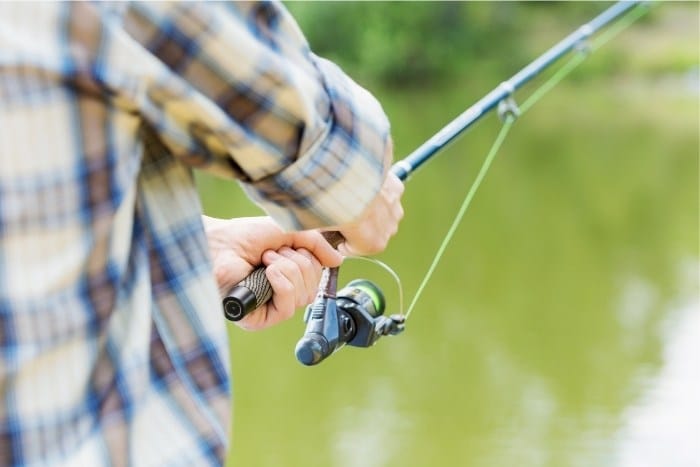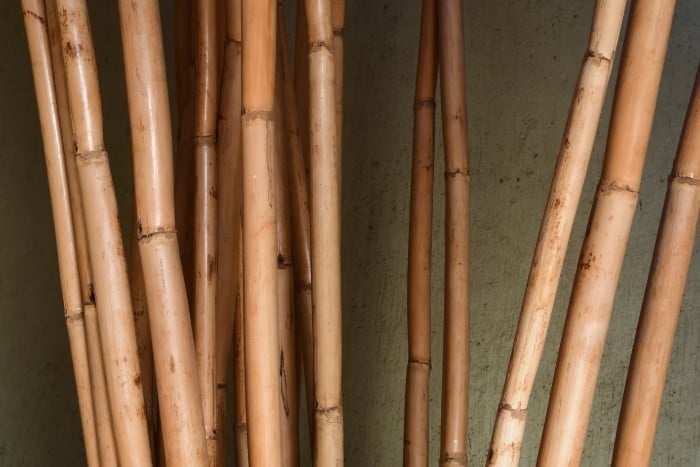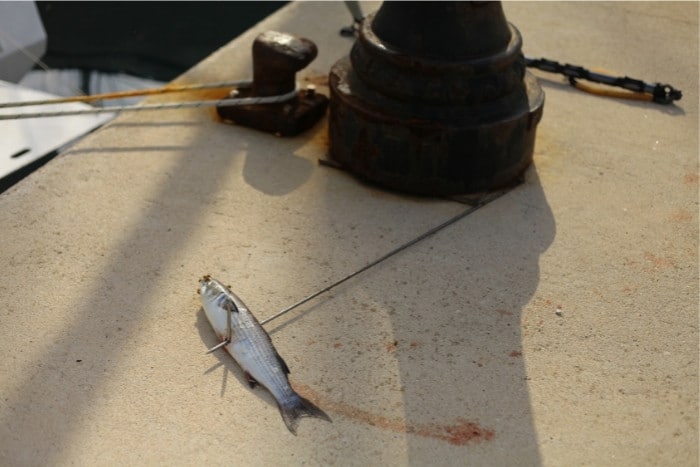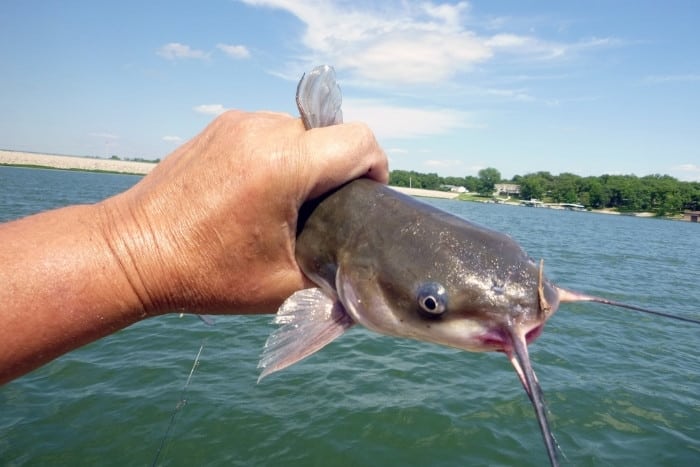If you are trying to figure out the best fishing methods, look no further. This list covers 16 methods, ranging from recreational to commercial fishing. Whether you are looking for the best way to catch a large number of fish, or a new challenge, something on this list will be sure to strike your interest.
The best fishing method might be a subjective term, depending on what you are looking for since a commercial fisherman might have a different opinion than a casual recreational angler. The best method to catch many fish might be trawling, while having the most fun might involve fly fishing.
Keep reading for a list of the best fishing methods to choose the one for you.
16 Best Fishing Methods To Try This Year
Here are 16 of the best fishing methods you should try this year. Whether you’re trying to catch as many fish as possible to stock your freezer or looking for a new challenge, a method on this list will interest you.
Always check local laws as they vary significantly from country to country and state to state. One method allowed in one area might come with a hefty fine or even jail time in another.
1. Rod And Reel Fishing
When most of us think of fishing, our minds go to rod and reel fishing. The name describes it well, using a rod and a reel to cast your hook out to where the fish are and tempt them into taking the bait.
Rod and reel fishing is the most versatile because you can use live bait or an artificial lure, and nearly any body of water will allow you to fish this way.
Rod and reel fishing is also the most popular method for hobbyists because it is efficient and requires little equipment.
Several styles of reels are available, including baitcasters, spin casters, and open-face spinning reels.
Rods also come in various options, including collapsible, multi-piece, and one-piece, with lengths from 2 feet to over 16 feet.
If you’re a hobbyist angler looking for either catch and release or a way to catch a few fish to stock your freezer, this is probably the method you’ll use.
Because of how easy it is to get into and understand, rod and reel fishing is the go-to method for most people.

2. Fly Fishing
Fly fishing is the second most popular method, and for a good reason. While it is more complex to get started with fly fishing than other methods, anglers’ skillset will pay off in catching fish in all situations.
Some key concepts in fly fishing include approach, presentation, and selecting the right fly, all while casting differently than rod and reel fishing.
All of these different aspects make fly fishing a more complicated alternative.
However, since fly fishing requires a better understanding of how to attract fish and entice them to bite, fly fishermen are generally better at knowing how and where to catch fish.
Fly fishing is the best method for those who want a new challenge when fishing and want to feel more in touch with nature.
3. Tenkara Fishing
Tenkara fishing is a Japanese style of fishing that is a more simplistic version of fly fishing. Tenkara has no fly reel; instead, the heavy line is attached directly to the end of the rod.
Tenkara rods were initially made of bamboo, although now they are usually made of artificial materials and collapse down to a compact one to two-foot package.
The compactness makes this method of fishing popular with backpackers as it is lightweight and minimalistic.
Tenkara originated in Japan and did not begin to be practiced outside the country until recently, and it has grown a small following.
This style of fishing is best for those looking for something lightweight and simple or a unique challenge adjacent to Western fly fishing.
4. Setting Up Fish Traps
Fish traps are an extensive fishing method, and later in this article, we’ll cover a few specific styles of traps that deserve more focus. The most popular trap styles are for crustaceans, such as lobsters and crawfish.
On the other hand, traps targeting fish include weirs, which are primitive-style traps that someone can place in rivers, or commercial traps that rely on nets or difficult-to-escape funnels.
Whatever type of fish you are looking to catch, there is likely some form of a trap to help you do so.
Setting up a fish trap is a great way to fish passively if you are trying to catch dinner or small minnows to use as bait.
This method is best for people trying to maximize the fish they catch with minimal time and effort. People worldwide have been making traps for many generations due to their effectiveness and efficiency.
5. Cast Netting
Cast netting is a popular method of fishing for catching live bait in shallow water or catching several fish in a feeding frenzy.
Cast netting requires only one piece of equipment and can catch several pounds of minnows in one throw.
This method involves a circular net with weights around the edges to help the net throw and sink and a handline that attaches to your wrist.
Throwing a cast net is difficult at first, but once you get the hang of it, it becomes a great tool in your arsenal.
This method is most popular with people looking to catch live bait in the water they are planning to fish to use the most natural and effective bait.
6. Bamboo Cane Pole
Bamboo cane poles use a conventional hook and bobber setup, along with some live bait, such as worms. This method is very simplistic and is often depicted in various forms of media.
While bamboo cane poles are the most commonly sold option, you can achieve this method using any sturdy stick. More efficient and effective ways have largely replaced this vintage fishing method.
If you want to try a traditional way of fishing, this is the best method to achieve something timeless. While this isn’t the most efficient method for fishing, its classic style is sure to appeal to certain anglers.

7. Bowfishing
Bow fishing involves a specially designed reel that fits onto a bow to hold onto the arrow as it is fired into a fish. This method is excellent for sight fishing invasive or large game fish.
Bow fishing is the best method to use in shallow water without many obstacles to get in the way or get tangled on.
It can be easily done on land or a boat, although you’ll need the ability to stand to shoot accurately.
8. Trolling
Trolling is one of the most common ways for anglers to cover large amounts of water. Simply put, trolling involves several lines in the water attached to multiple poles or a main line, being pulled from a static position or behind a boat.
Trolling is effective because it uses moving lines that can cover a large area and catch fish as you go.
Using bait on several lines will also fake the appearance of schooling fish and trigger an aggressive feeding response from predator fish.
This method is excellent if you are targeting aggressive fish in a large body of water, and anglers commonly use it with a few poles in the water trailing behind a small boat.
Since you don’t want to move too fast, this method is especially popular with kayakers and small boats.
9. Trawling
Trawling is similar to trolling, except you use a net instead of hooks. Trawling is more commonly used in commercial fishing practices while trolling is typically used in a more recreational setting.
Fishermen can do trawling with a single small boat up to a massive net dragged between two large commercial fishing boats.
Thousands of pounds of fish can be caught this way, and fishermen can target fish along the bottom of the water or in the middle of the water column.
Trawling is an incredibly effective way to catch fish, at the cost of indiscriminately catching any species of fish and other animals.
Commercial fishing often catch more than the targeted species, including endangered animals such as sea turtles and dolphins.
10. Ice Fishing
While ice fishing is not a specific method, it’s still a unique way to catch fish when the water has frozen over. Ice fishing typically uses short fishing rods and live bait or simple lures.
All you need to get started ice fishing is a hole in the ice and a way to attract and hook the fish.
Other equipment includes shelters, seats, heaters, tip-ups, and many other options to make ice fishing more comfortable and practical.
Ice fishing is the best style of fishing for anyone who wants to go fishing year-round, but the weather in their area freezes the surface of the water.
Just be sure that the ice is strong enough to hold you before you attempt to go out.
11. Harpoon Fishing
If you are someone who enjoys snorkeling or scuba diving, harpoon fishing might be the solution for you.
Harpoon fishing is prevalent among coastal communities where fish is a significant part of the diet, and harpoon fishing allows them to select the perfect dinner.
Harpoon fishing is a skill-intensive way to fish, involving the ability to get close enough to take a shot without scaring off the target fish, which, combined with the need to swim underwater, creates a sport with plenty of opportunity for one to hone their abilities.
Harpoon fishing is growing in popular areas where citizens rely on fish for protein but are also looking for more environmentally friendly ways of doing so.
With harpoon fishing targeting only one fish with a low likelihood of a secondary catch, this method generates few excess fish deaths.

12. Spearfishing
Spearfishing is similar to harpoon and bow fishing, except you throw a spear at the fish instead of a device propelling the projectile.
This method is best in the same areas as bow fishing is: to catch large game fish or remove problem invasive species.
Fishing spears typically have three or four sharp prongs at the end of them to help keep the fish from slipping away.
Spearfishing is another method that has been around for nearly as long as people have caught fish and is still culturally significant.
Spearfishing is tricky to get down at first due to the requirement to both accurately throw the spear and adjust for the light refraction, causing the fish not to be where they appear.
13. Longline
Longline fishing or longlining is another method that is more common with commercial fishing than recreational, but either group can use it.
However, longlining is highly regulated and prohibited in many areas.
This style of fishing involves one main line with secondary lines attached at regular intervals and baited with hooks on the bottom.
This method can cover a large area and catch as many fish as there are hooks.
One of the reasons that this method is regulated heavily is the high likelihood of secondary catches, including endangered fish and even birds that get tangled in the lines.
14. Handline Fishing
Handline fishing is much like traditional rod and reel fishing, without the rod or the reel. Handlining involves a single line cast out, held, and reeled in by hand.
Fishing lines can be attached to thicker lines to be handled more easily, or a simple hand reel is sometimes instead.
This method is again one of the oldest and most straightforward methods out there and allows for a personal feeling while fishing.
This method is about as simple as it gets while still feeling like fishing and can be done for cheap with minimal gear.
Handlining can be more dangerous than other methods because the line may get wrapped or tangled up, and the fish can take off, causing cuts and lacerations.
15. Noodling/ Hand Fishing
Hand fishing, or noodling, as people call it in some parts, involves the simplest fishing method, requiring only two pieces of equipment: your hands.
As the name suggests, you catch fishing by grabbing them by the gills.
This method is most commonly used to catch catfish by dangling the angler’s hand in the catfish hole and causing the fish to bite defensively.
From there, it is hooked through the gills and pulled out of the whole to be eaten or released.
This method of fishing comes with inherent risk due to the nature of sticking your arm into a muddy hole where snapping turtles, alligators, or other threats might lurk unseen.

16. Gillnets
Gillnetting is a style of fishing that uses a net to catch fish in one of three ways while the net is strung up with regularly spaced floats and weights, keeping it in place.
The three ways a fish may be caught are by getting tangled in the net, the net wedging around the body, or the fish getting their gills caught in the netting, hence the name.
While this method is incredibly effective, it is also controversial due to its high rate of accidental catches and is often lethal to any fish caught in one.
However, when properly sized and checked often, a gill net is likely to have a low rate of accidental catches that damage the nearby ecosystem.
Conclusion
And there you have it, 16 of the best fishing methods.
Some of these methods are best for anglers looking for a new challenge, some are for those looking to catch food to feed their family, and some are designed to catch fish in a commercial setting.
Hopefully, you were able to learn something new and have a new method of fishing to try out this year.
Fishing is one of the oldest professions and pastimes, and as a result, there are many different methods to catch fish.
